In my recent post I concluded that the Controlled Burn was justified based on the following premise, which was that there were only two choices - allowing an explosion or doing a controlled release burn.
Questioning this was difficult because all we really knew was that there was a fire , hazardous chemicals were spilled, and pressurized Vinyl Chloride tanks can explode when heated.
I did not know the condition of the 5 derailed Vinyl Chloride Tanks beyond the fact at least 1 of the tanks was leaking.
I found the following EPA document with more details which has caused me to rethink this
The Vinyl chloride did not leak from a ruptured tank from the accident. Instead it was being released in seemingly limited amounts via a safety relief valve. The reason for that is still unclear, perhaps heat which one would think could be controlled , or it was damaged. The other 4 tanks were undamaged, and no leaking was reported.
The main leak was from the tank with butyl acrylate. The entire tank was released.
Other chemicals that were released included Propylene Glycol. Diethylene Glycol, ETHYLHEXYL ACRYLATE, Petroleum lube oil and Petro oil all of which dont pose as much of a danger as Vinyl Chloride.
Plus there was solid Poly Vinyl that was burning, the smoke from which is toxic
Butyl acrylate is a clear colorless liquid with a sharp, distinct smell less dense than water, which can form a surface slick on water, according to the National Library of Medicine. The chemical is used for making paints, coatings, caulks, sealants and adhesives. It is flammable
1/
2/
So this is not a good chemical but it was already released and so was not a reason for the controlled release and burn
So the only apparent reason I can see for their actions was 1 Vinyl Chloride Tank that was releasing VC through a relief valve. You had 4 other apparently undamaged tanks of VC that may or may not have been in proximity to the fire.
So it seems that if the fire from the other chemicals could have been brought under control there would be little need to release the contents of the Vinyl Chloride
During this time the railroad is blocked. Nothing is getting through. Norfolk Southern which seems to have an inordinate amount of influence is chafing at the bit. The quickest way to avoid a lengthy but safe removal process of the 5 mostly full and derailed Vinyl Chloride tanks is empty them into a trench and burn it
An operation to drain vinyl chloride -- a chemical that officials said was unstable and could explode -- from five Norfolk Southern rail cars began just after 4:30 p.m. ET.
Scott Deutsch of Norfolk Southern had earlier said small, shaped charges would be used to blow a small hole in each rail car. The vinyl chloride would then spill into a trench where flares would ignite and burn it away.
As of 7 p.m., the flames were reduced and a small fire continues in the pit, Deutsch said at the news conference.
It is "still an ongoing event so we just ask everybody to stay out," the mayor said. "We have to wait to the fires die down."
An evacuation zone of 1 mile around the train's crash site remains in place, Conaway said. Authorities will reassess the zone Tuesday morning, he added. "We really don't have a time frame right now" for the return of residents, he said.
Prior to the controlled release Monday, officials worried the five derailed cars carrying vinyl chloride might hurl toxic fumes into the air and shoot "deadly shrapnel" as far as a mile away.
One rail car in particular had been a focus of concern because its malfunctioning safety valves had prevented the car from releasing the vinyl chloride inside, a Columbiana County Emergency Management Agency official and a Norfolk Southern spokesperson told CNN earlier Monday
Ahead of the controlled release, the evacuation zone surrounding the fiery derailment site expanded to two states, Ohio Gov. Mike DeWine said.
DeWine and Pennsylvania Gov. Josh Shapiro had ordered evacuations for a 1-mile-by-2-mile area surrounding East Palestine, a village of about 5,000 people near the Pennsylvania border, DeWine said.
According to the Centers for Disease Control and Prevention: "Vinyl chloride in water or soil evaporates rapidly if it is near the surface. Vinyl chloride in the air breaks down in a few days, resulting in the formation of several other chemicals including hydrochloric acid, formaldehyde, and carbon dioxide."
https://amp.cnn.com/cnn/2023/02/06/us/east-palestine-ohio-train-derailment-fire-monday/index.html
According to one resident
Asked why the railroad and state officials knowingly risked the lives and health of the town’s residents, he said, “Because the alternatives to what they did would have taken too long and cost them too much money. If they had put the fire out, they would still have had to handle every one of those containers and its content as hazardous waste, all non-marketable, and they would have to have gotten rid of all that contamination. This way, they don’t have contamination anymore. It burned up and it spread over God knows how much. They got off very cheap in my book.”
Honestly speaking, I cant argue against what they did because the details are still too murky, there are not enough facts. I do think this needs investigating though.
I had a chance to watch Del Big Tree today on his High Wire Show. I used to enjoy his show but feel it has become too politically biased. As a non-profit thats a no no. Be careful Del.
In any event, Del is going off on the Federal Alphabet Agencies for this fiasco, but fails to mention the Republican Governor failed to Declare an Emergency and request Federal Funding. This would have given these Federal agencies more control. As it is, agencies like EPA are only support agencies. Decisions are made by the state. But that does not fit his shows political bias so he ignores it.
He also brings back OSHA experts Tammy and Meghan to talk about the hazards and sent his reporter to East Palestine wearing a Respirator
Here are some pictures at the crash site a few days ago
1/
2/
3/
No more smoke
Of course, no doubt some vapors are coming from that contaminated soil so Tammy and Meghan have a good point, I would think those workers on site should have respirators at least
Tammy and Megan cracked me up when they said the solution to industry capture of the alphabet agencies was to privatize them. 😂.
You cant make this stuff up. How in the hell will a private for profit corporation (or even a non-profit) empowered to regulate industries stand up to big corporations who will throw money at them in an even more direct way than they do to control Federal Agencies? Perhaps I misunderstand what they mean by privatize.
The solution is not to privatize, it is to remove politics , revolving doors and conflicts of interest and to have oversight with teeth . Easier said than done but it needs to be up for discussion. I might do a post with more detail on this.
Anyways, here is the show link
https://thehighwire.com/watch/
Other news.
EPA administrator Michael ReganVisiting East Palestine
https://www.wkbn.com/news/local-news/east-palestine-train-derailment/epa-administrator-visits-east-palestine/
This is a day after saying on CNN it was still to unsafe to send EPA staff to the site.
8:10
I guess he took some flack from the CNN interview
Now for the Governor
Ohio Gov. Mike DeWine said Tuesday he was “not seeing” the need for further federal assistance, though President Biden had offered it. Without the full extent of contamination known, however, environmental advocates have questioned the response, and Pennsylvania Gov. Josh Shapiro has said Norfolk Southern mismanaged its response to the disaster.
https://www.washingtonpost.com/climate-environment/2023/02/15/ohio-train-derailment-toxic-chemicals/
Guess that didn’t go down well. On Thursday Governor requests assistance from CDC
In an update on the situation in East Palestine, Ohio, Gov. Mike DeWine said he has requested the immediate support of the Centers of Disease Control and Prevention (CDC), almost two weeks following the derailment of a train carrying toxic chemicals.
DeWine said he is requesting the CDC to “immediately” send medical experts to the area to evaluate and counsel community members “who have questions and/or are experiencing symptoms."
Of course, I cringe when someone calls in the CDC to help. Hide your babies folks.
Very informative article here. Suggest you read the whole thing here
In 2005, three scientists warned that changes to the EPA’s chemical review process “that would give industry officials greater input in the science behind its risk reviews” could have catastrophic consequences for public health. The authors of the report acknowledged that while increasing the participation of the industry could “reduce the agency’s review times,” it may allow corporations to “underregulate” themselves when it comes to determining “acceptable limits of public exposure.”
The scientists used the case of vinyl chloride to demonstrate how industry involvement may undermine the integrity of the EPA’s scientific review process and subsequent policy recommendations. The Toxicology Review and Integrated Risk Information System (IRIS) Assessement for vinyl chloride were finalized by the EPA in 2000. Initially, these documents had included findings from multiple studies that cited “suggestive epidemiological evidence that cancer of the brain, lung, and lymphopoietic system are associated with exposure.”
However, in 1999 the agency received a letter from the chemical industry that raised doubts about connections to other types of cancer, aside from those that attack the liver, and called for these other threats to “be deleted from the final review.”
The EPA complied with these edits, a decision the three authors described as “striking” since there was no clear evidence that showed that by reducing the risk of liver cancer, all other organs would be protected. Such a decision precluded the EPA “from developing a standard based on an assessment of the total cancer risk to all organs,” which is required under the agency’s own guidelines.
This case highlights the power of corporations to influence government regulation and the threats to public health that can be associated with these interventions.
In 2012, a train carrying vinyl chloride derailed in New Jersey, prompting the Obama adminstration to reexamine how highly hazardous materials are transported and classified.
The Department of Transportation began considering new rules to increase safety protocols for locomotives classified as a “high hazard flammable train.” Lobbyists from both the chemical and rail industry fought the government on these new requirements and were able to limit the scope of what trains would fall under this more scrutinized classification. Companies with trains that meet these classifications must inform state leaders before the cargo passes through, providing greater oversight capabilities to state-level authorities.
On Tuesday, 14 February, Ohio governor Mike DeWine said that it was “absurd” that Norfolk Southern’s train did not meet the standard necessary and called on Congress to address these gaps.
Additionally, these new rules would have required these high-risk trains to install state-of-the-art brake technology. However, when President Trump took office, members of his party put pressure on his administration to remove these requirements. Today, without pressure from the federal government, many cargo trains use brake systems that are not dissimilar to those developed during the 1800s.
David Sirota, who has reported widely on the regulatory battle between rail and chemical companies and the federal government, estimates that updating the brakes would have cost the rail industry around $3 billion.
“That’s about two weeks of operating revanue,” said Sirota adding that the cost represented a “tiny amount of money when you are talking about the entire rail industry
During an interview with The Young Turks, Sirota said that the rail companies were opposed to the new rules “because they presume that their current safety systems are fine,” and if they fail, they know that “governments, local, state, or federal will pick up the tab for the cleanup.” Federal regulators, who spoke with Sirota, said that these new brake technologies could have avoided the crash in East Palestine.




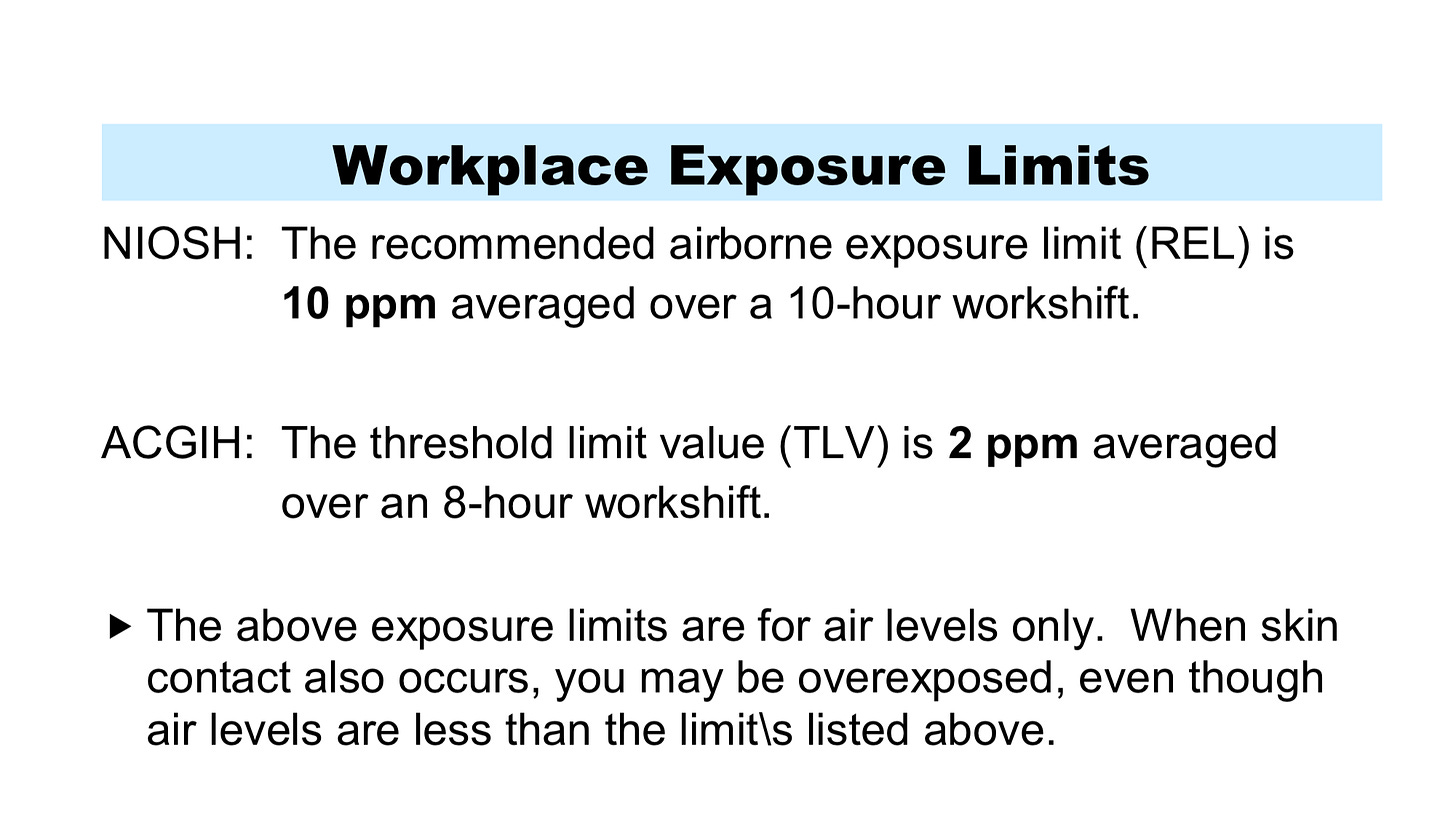
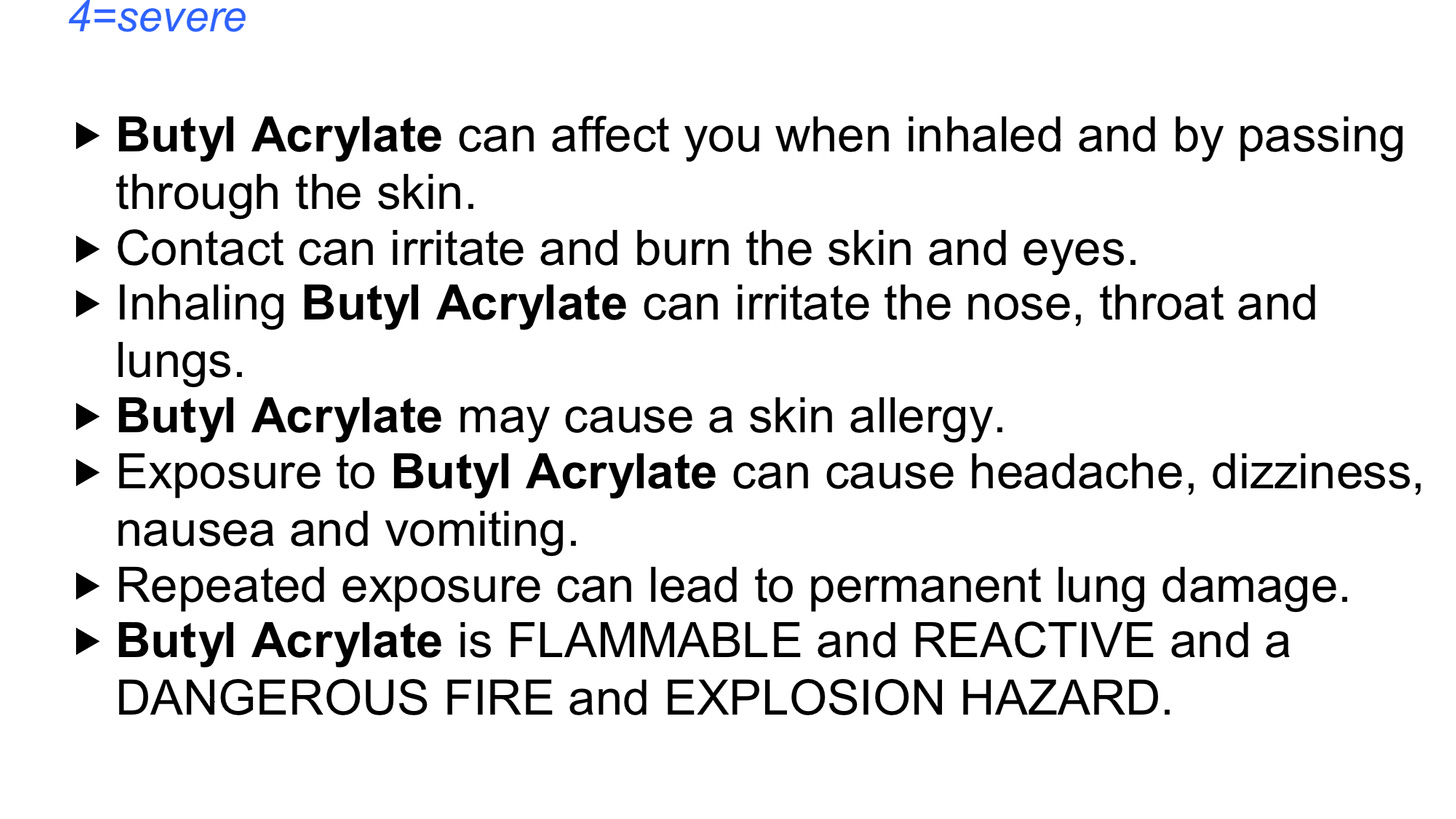
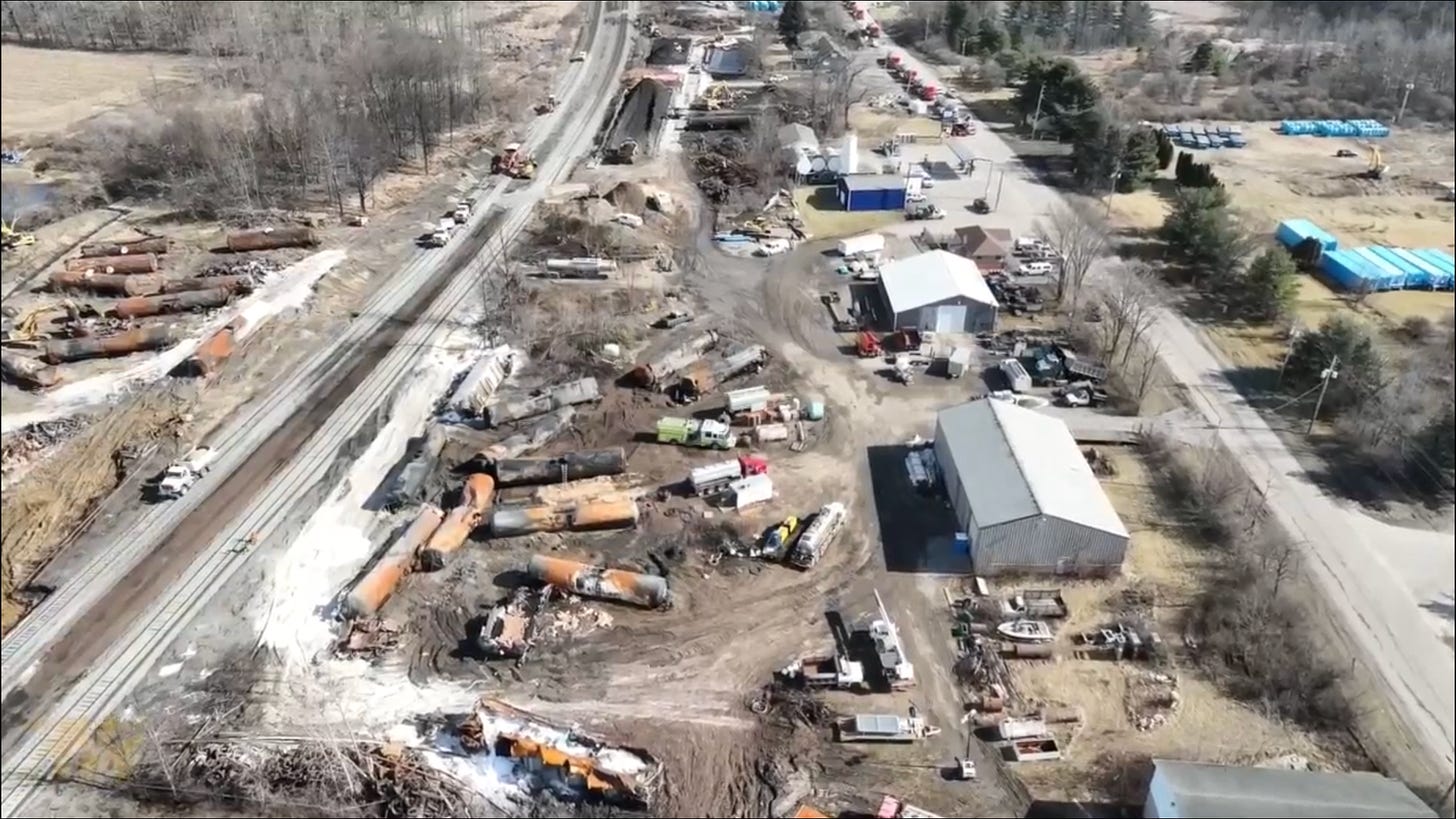
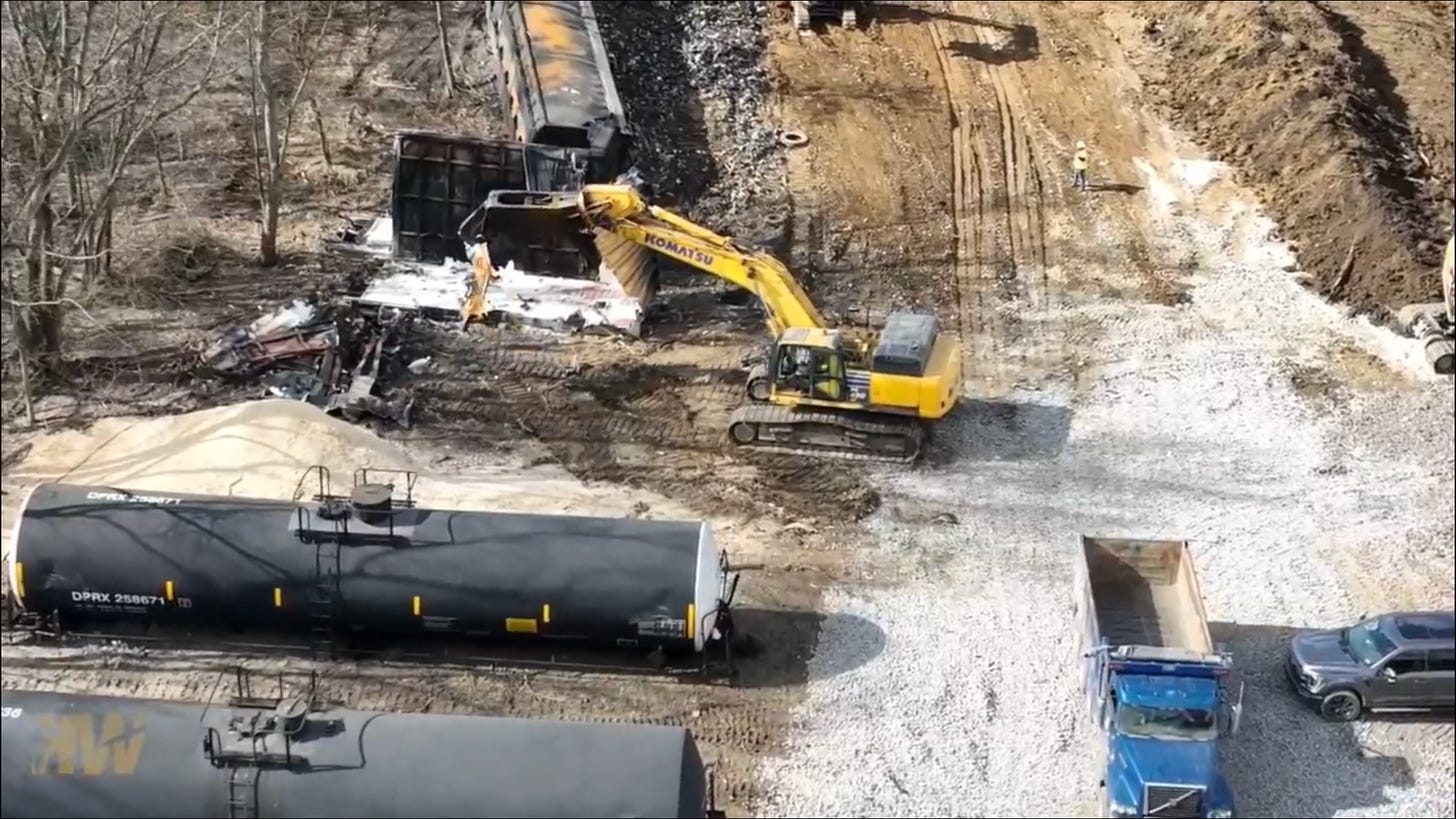
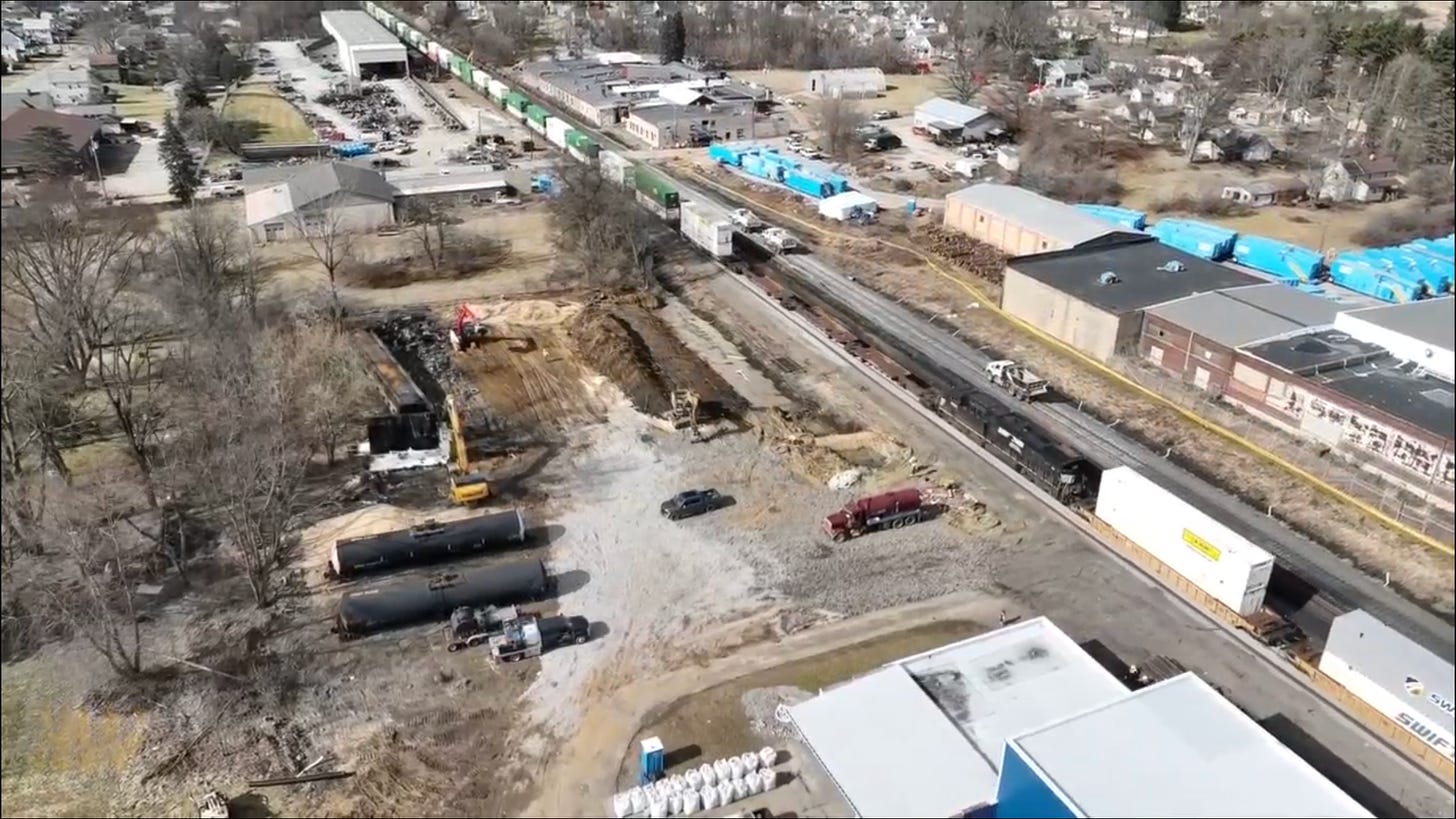
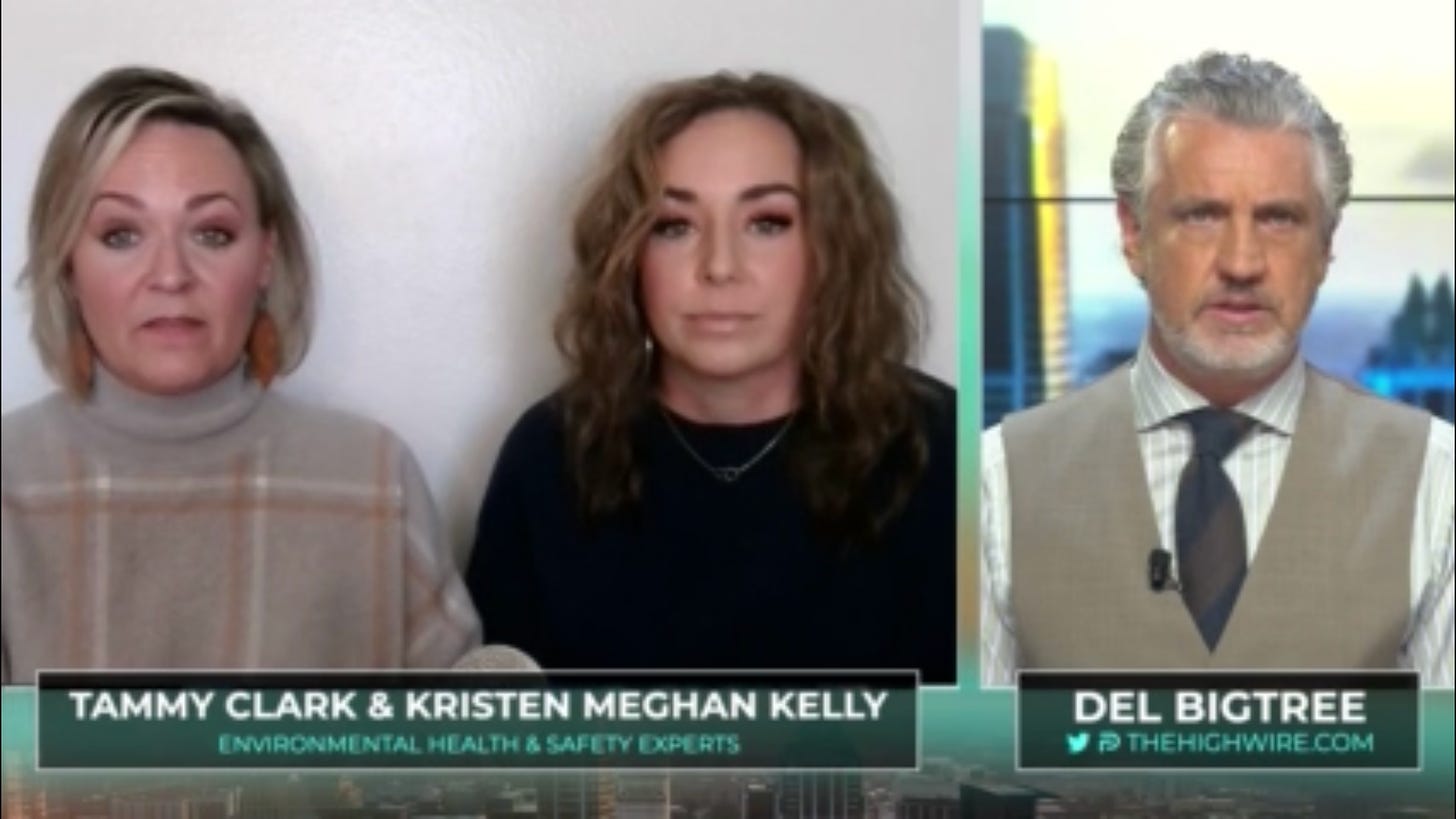

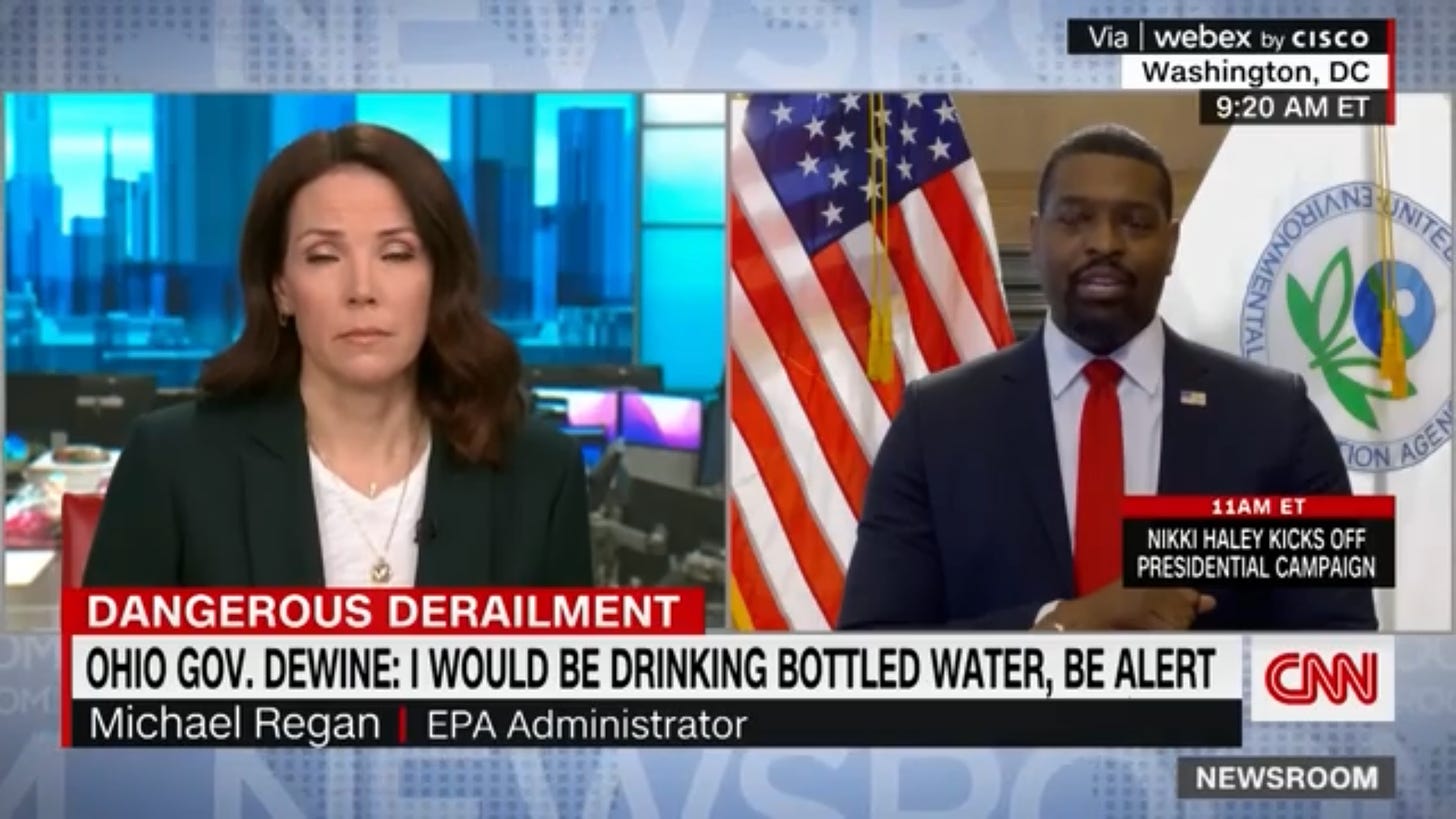
Appreciate all of the data collection! If I had to provide a guess it seems as if the chemical fire that was already started from the initial crash (the poly vinyl it appears) would spread to the other tanks. I'm not sure if the other reagents are explosive under pressure, but that may at least seem like the approach to let it all burn rather than try to save and move tanks which may take days.
Going scorched earth I suppose. 🤷♂️
As you alluded to in your previous post, and something I added to my follow-up, the Ohio River has been a site of chemical dumping for years. It's one of the most polluted rivers. It'd be hard to assume that privatization would somehow deal with this issue better. The response to one side wanting more regulations isn't to inherently argue for less or more privatization. That just ends up becoming reactionary.